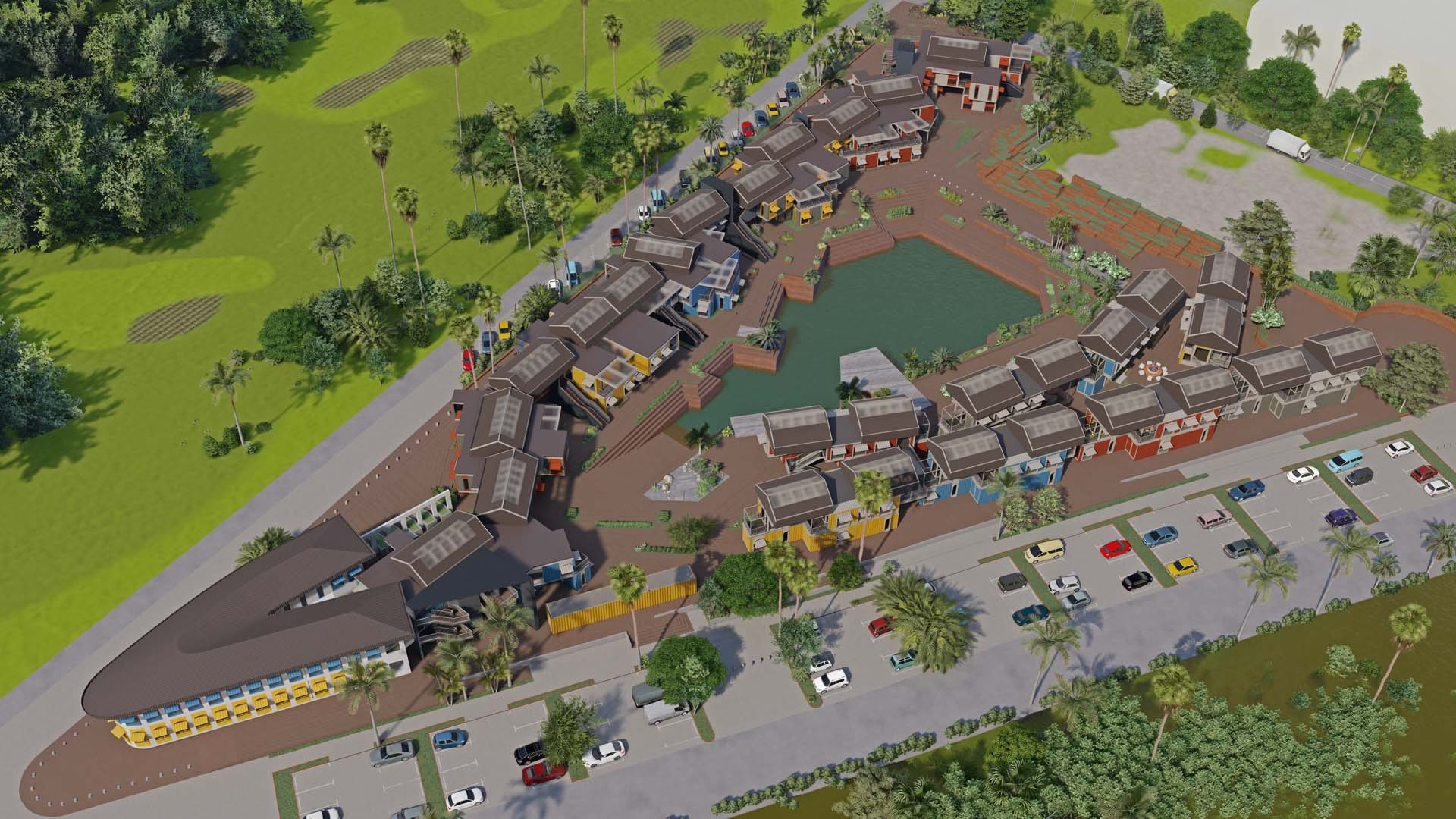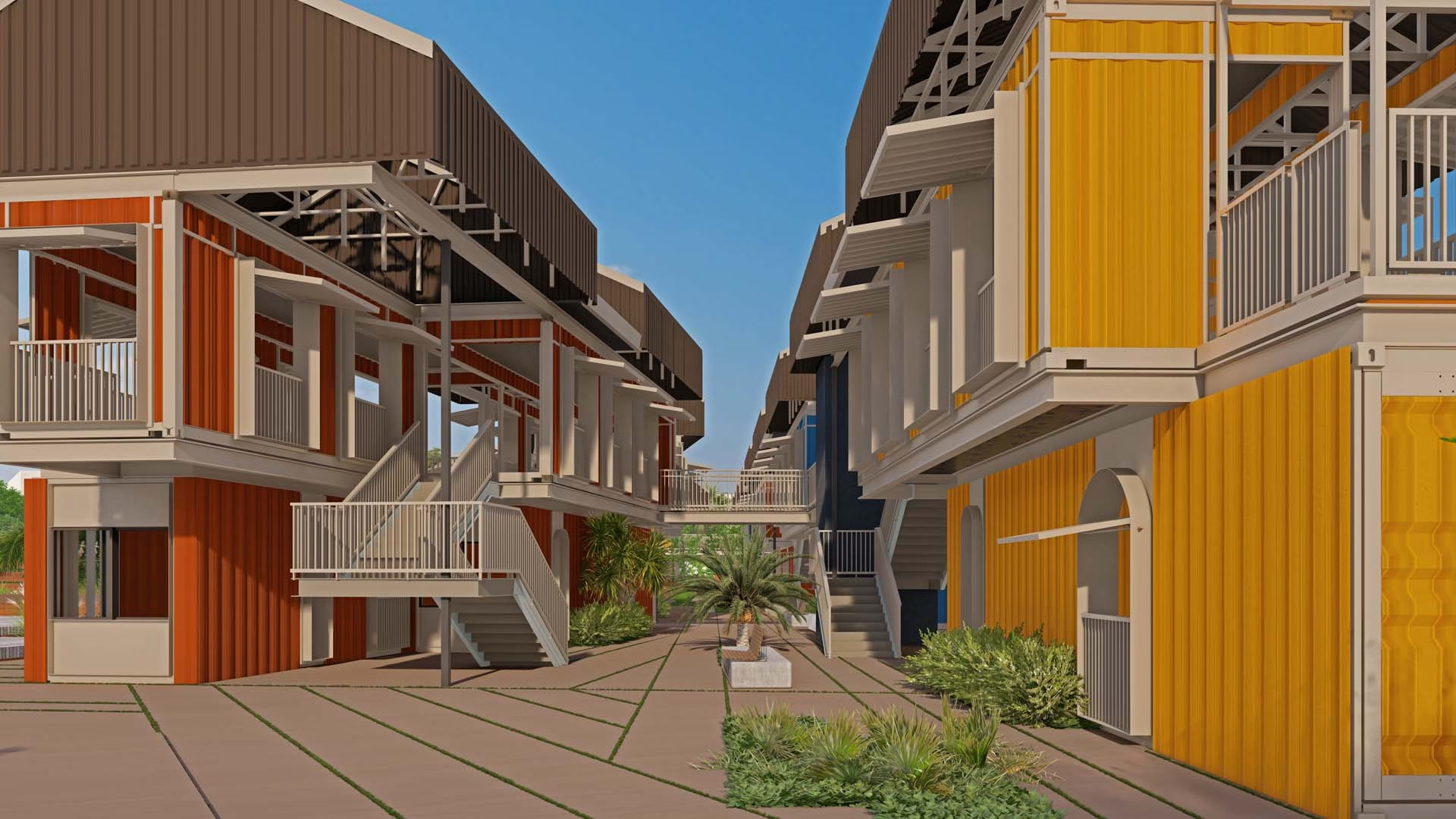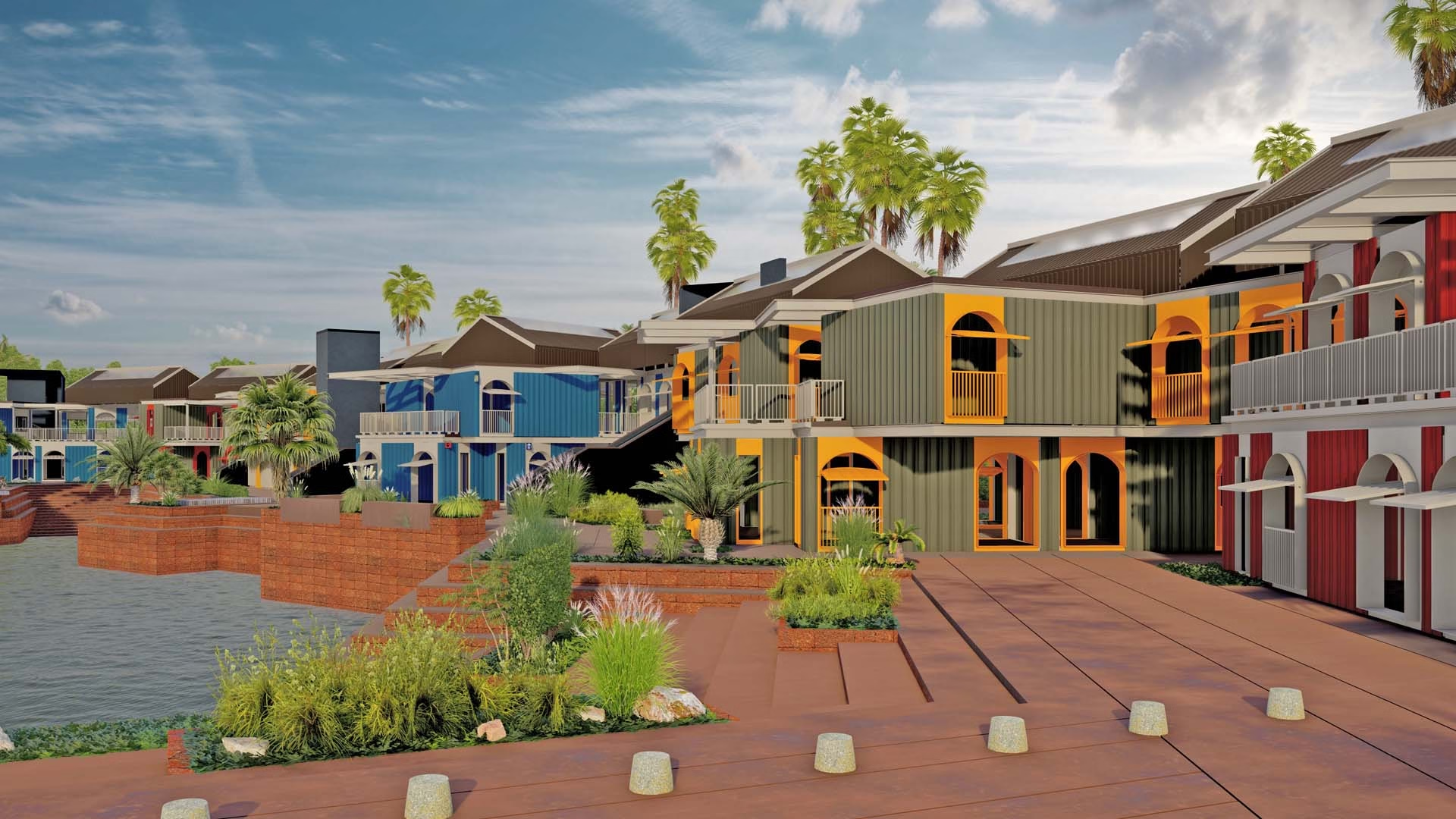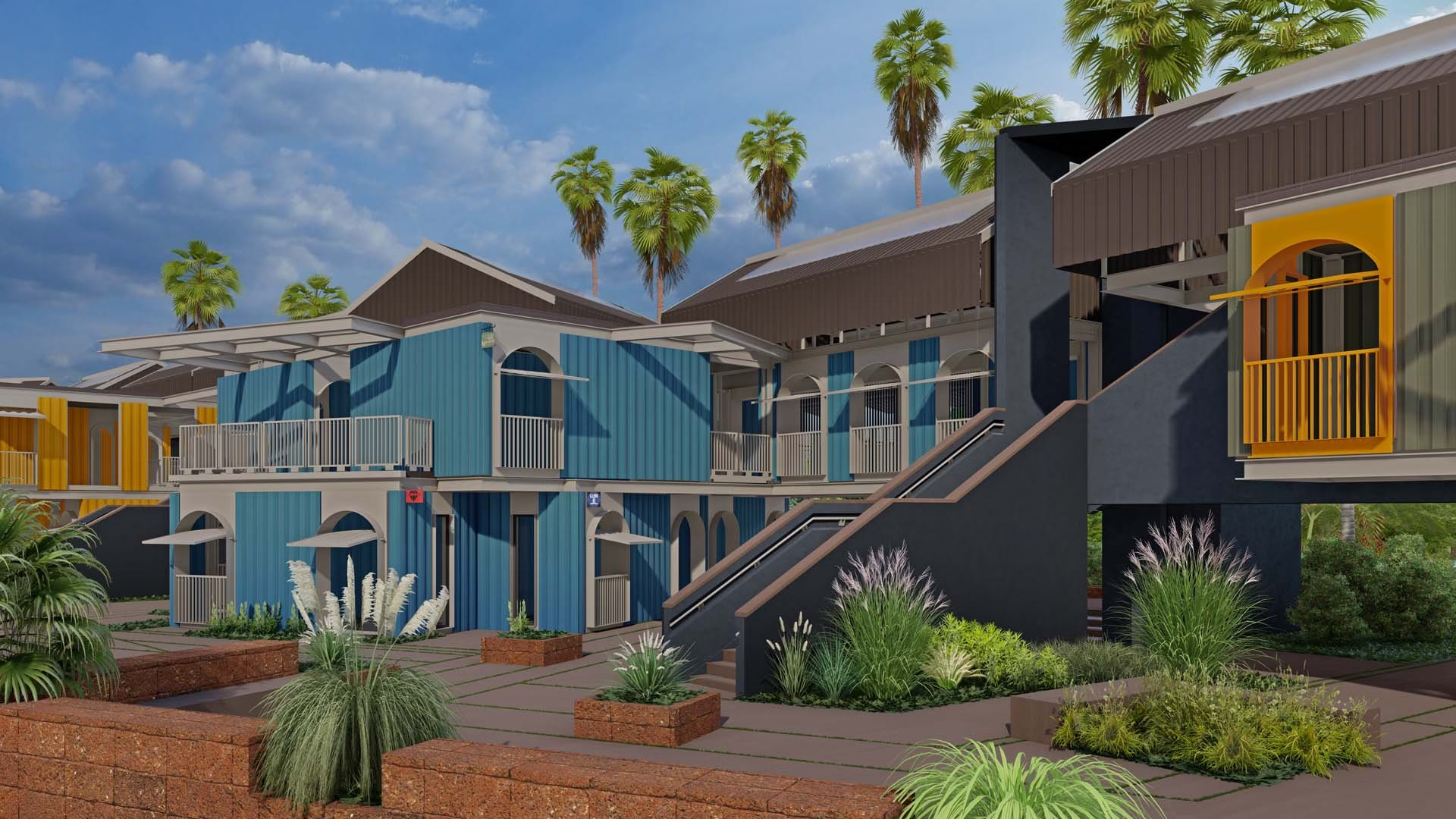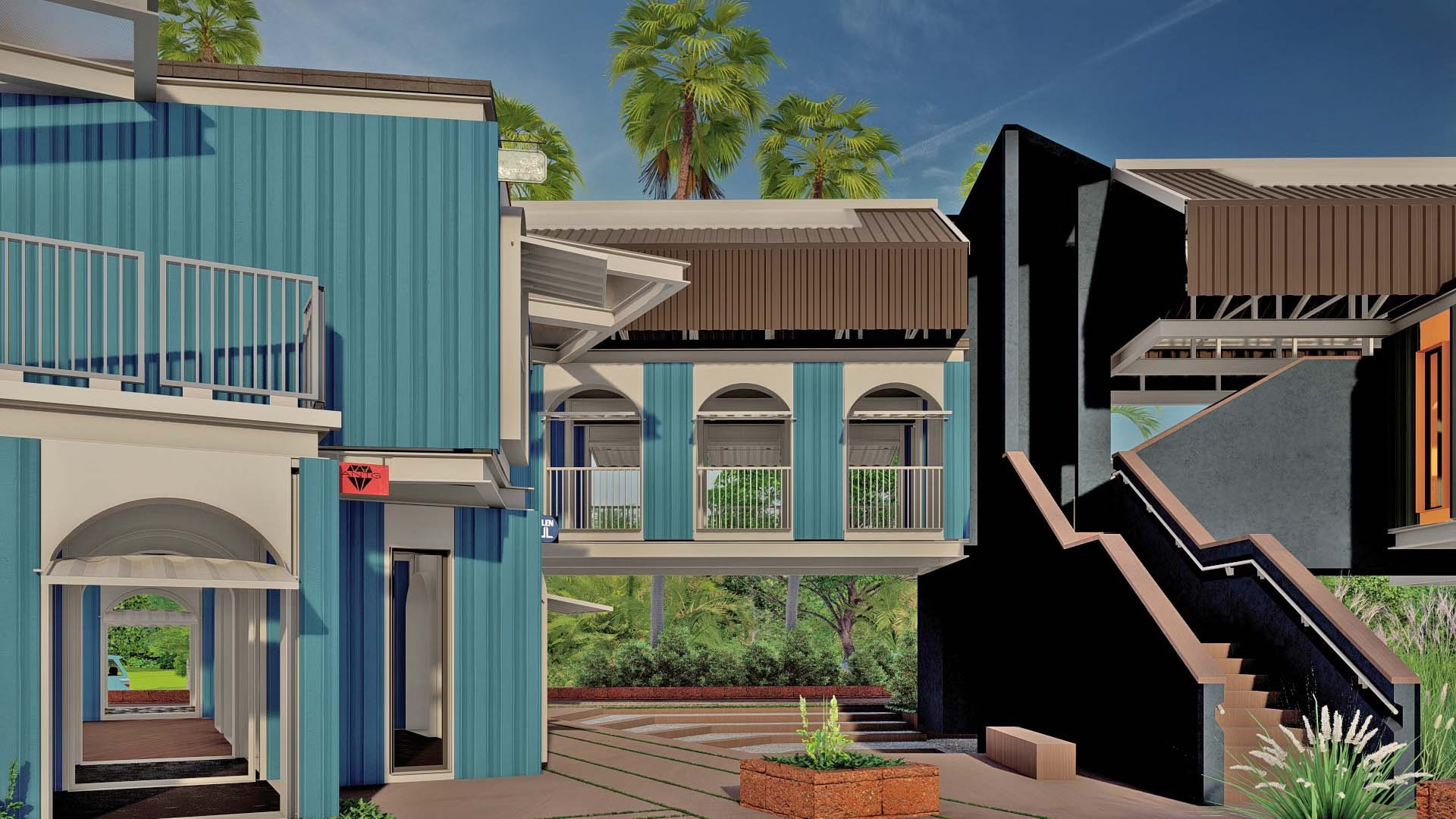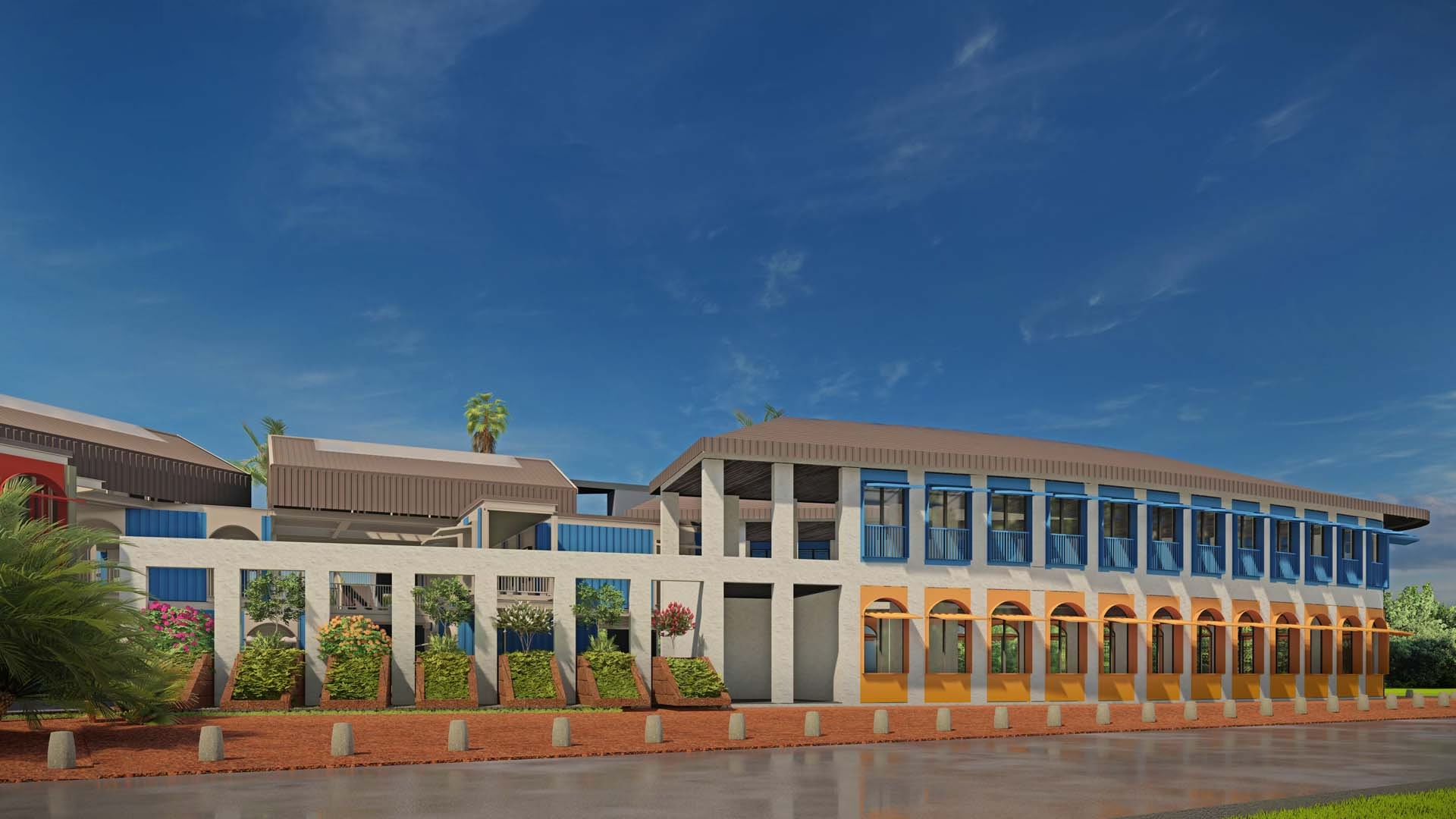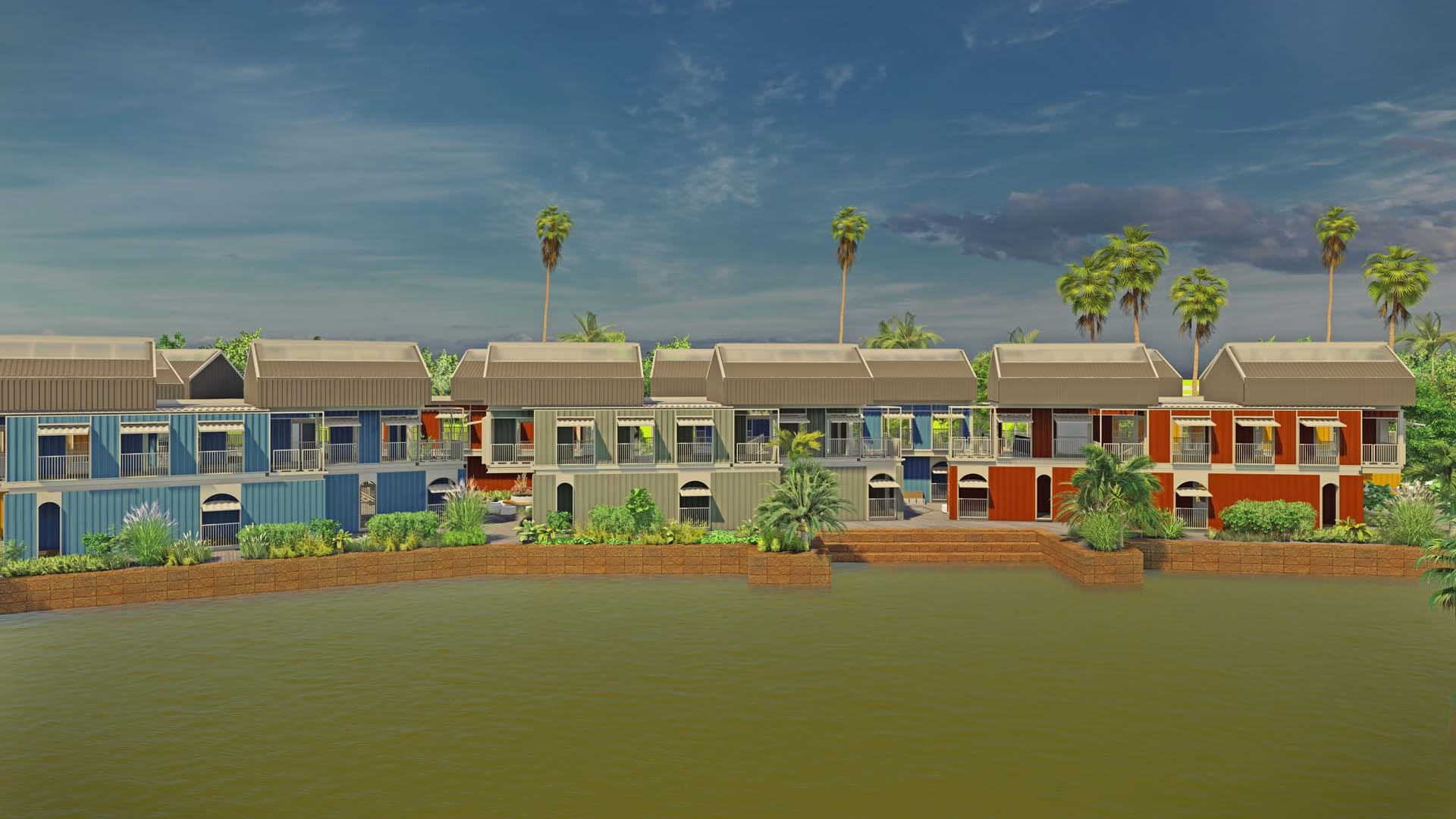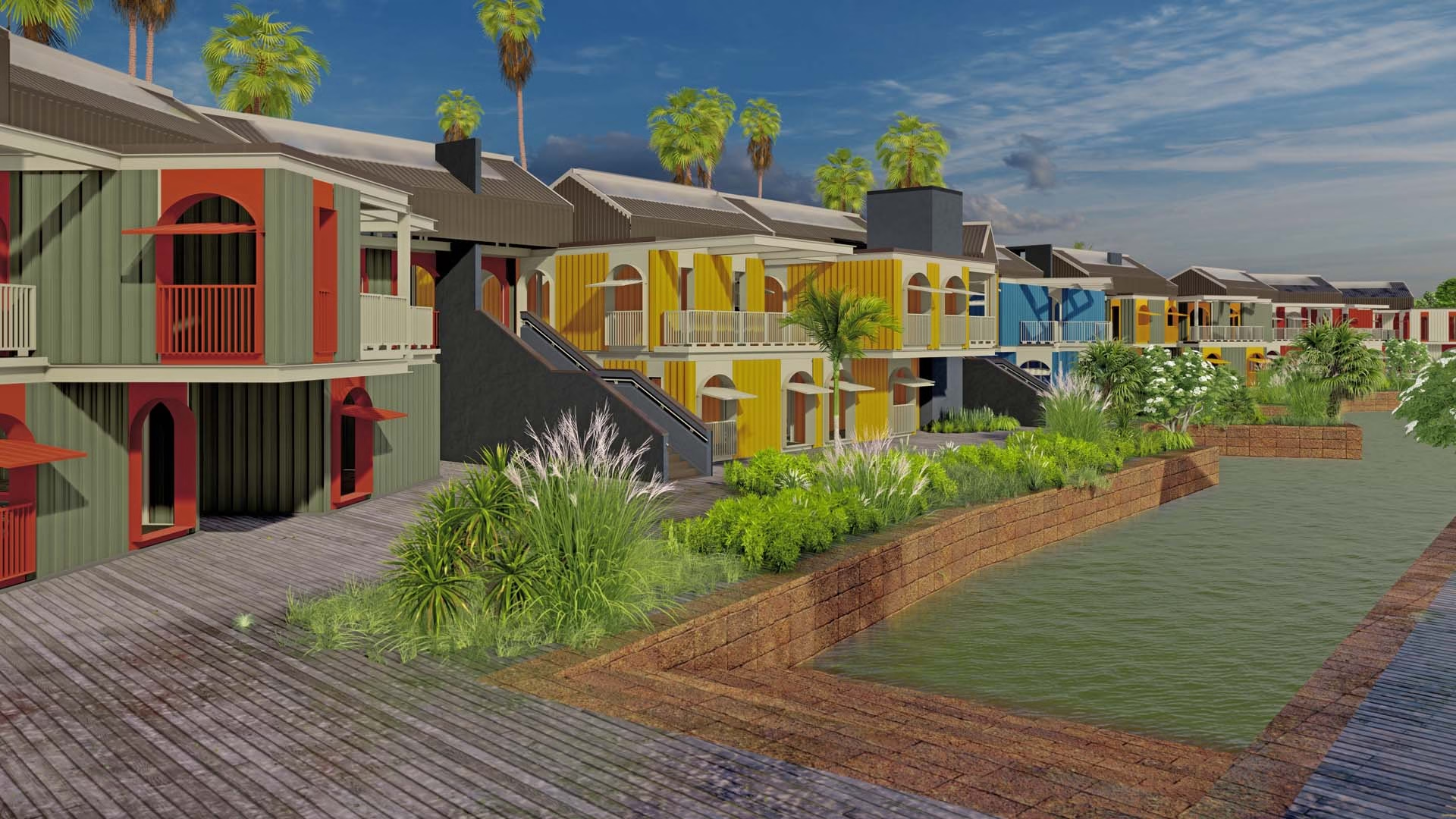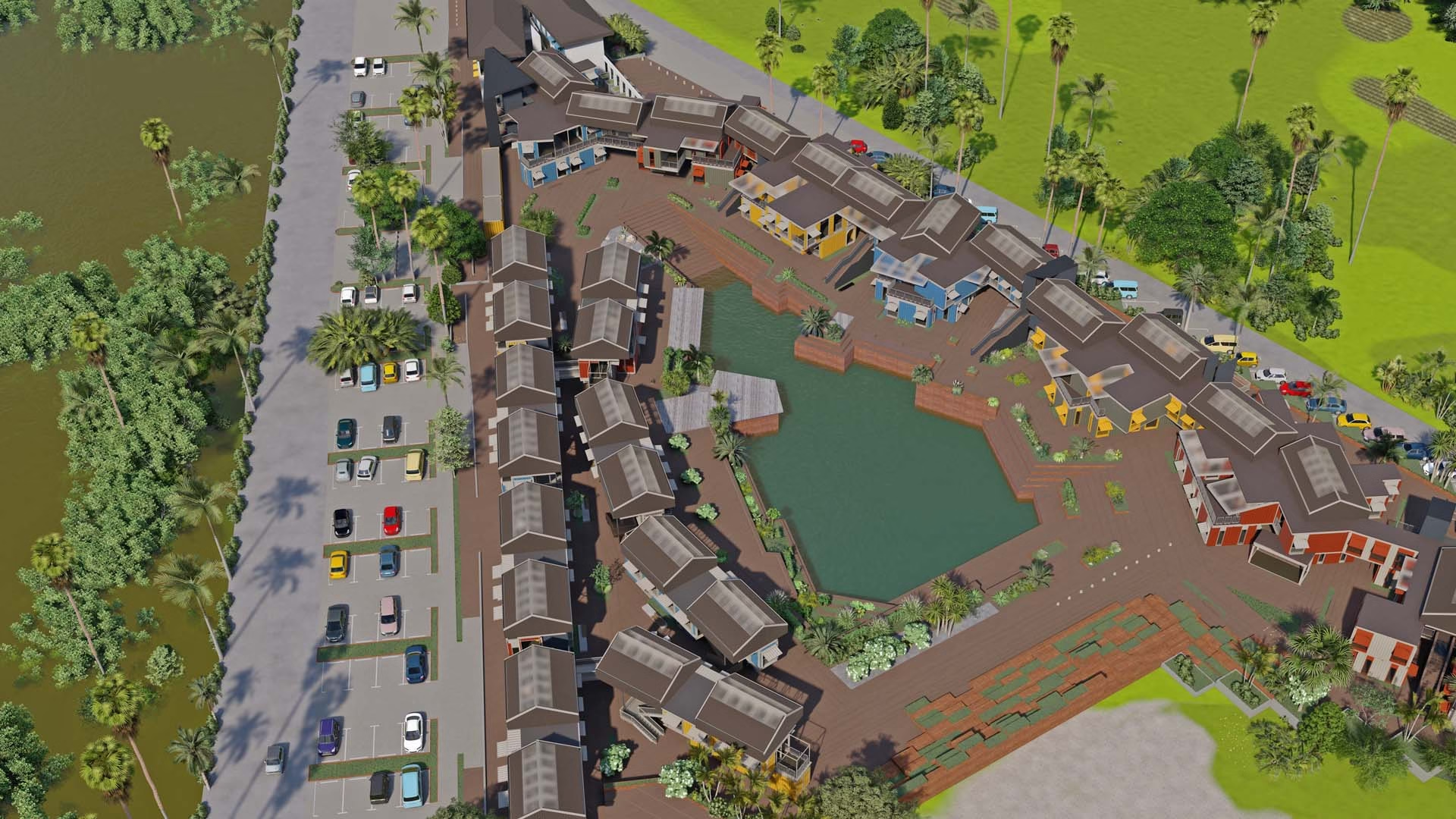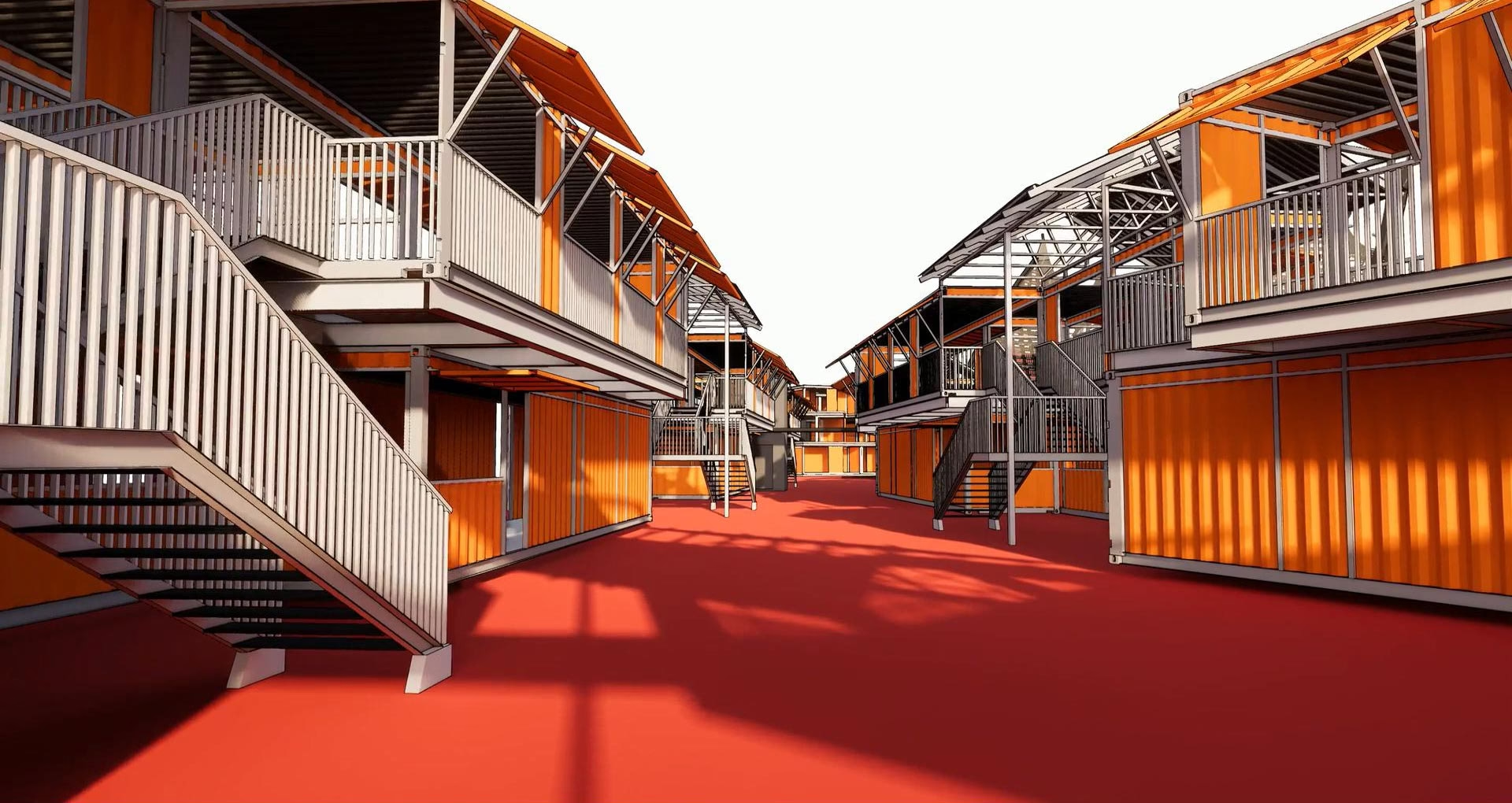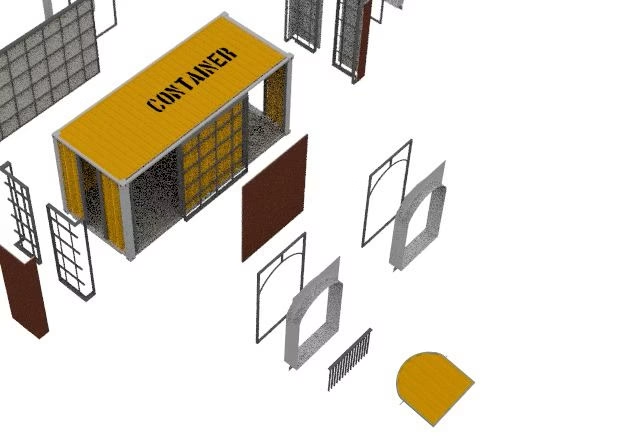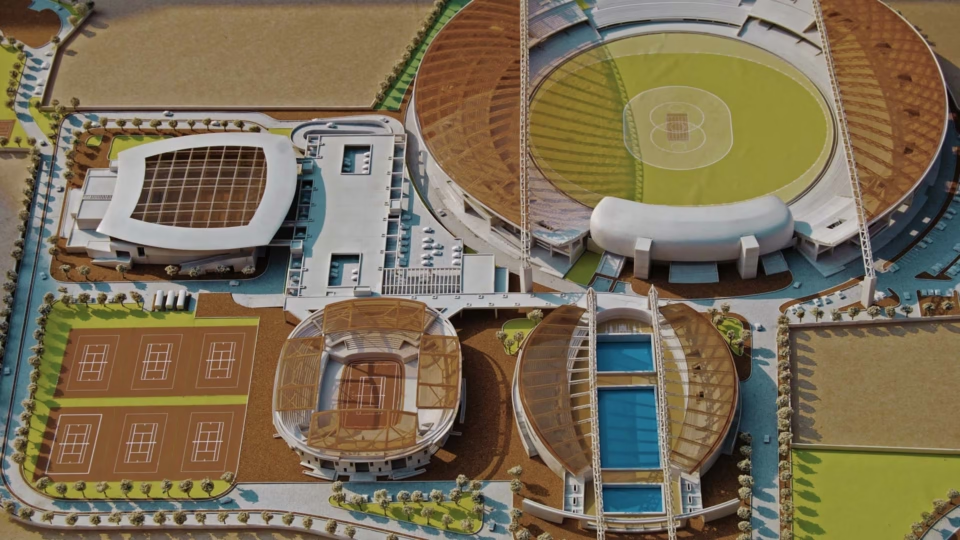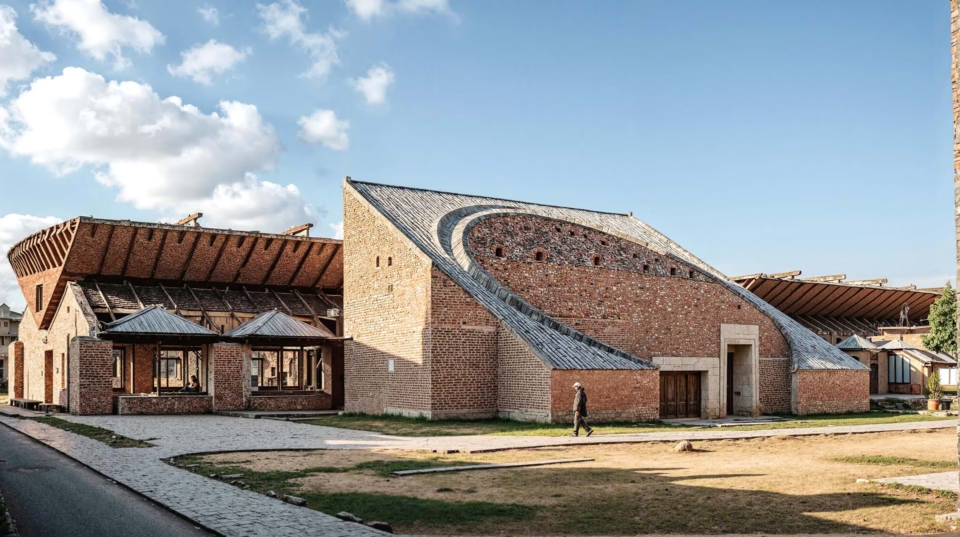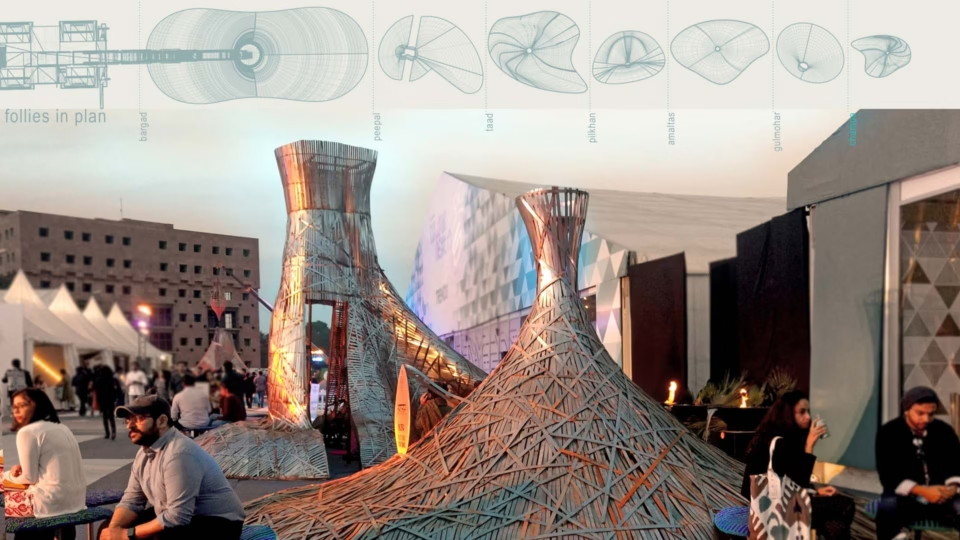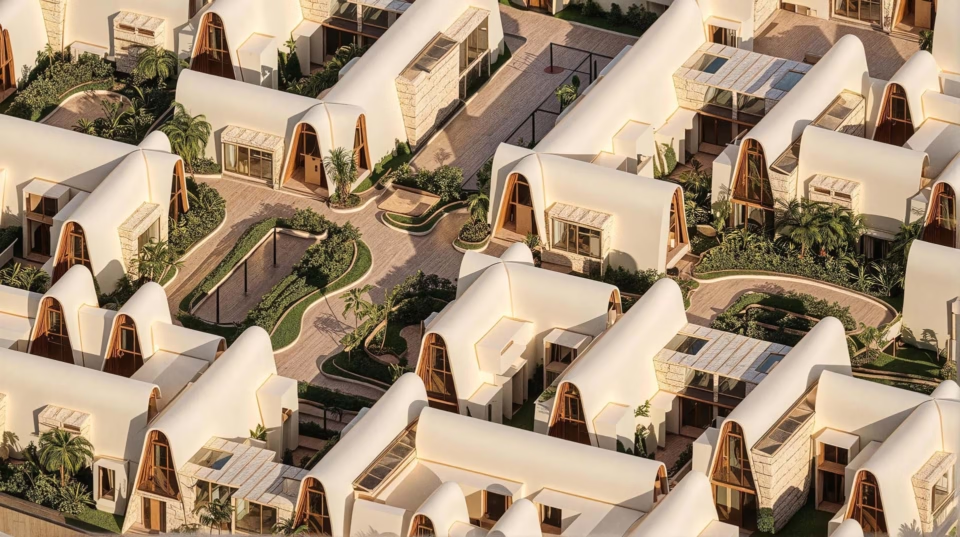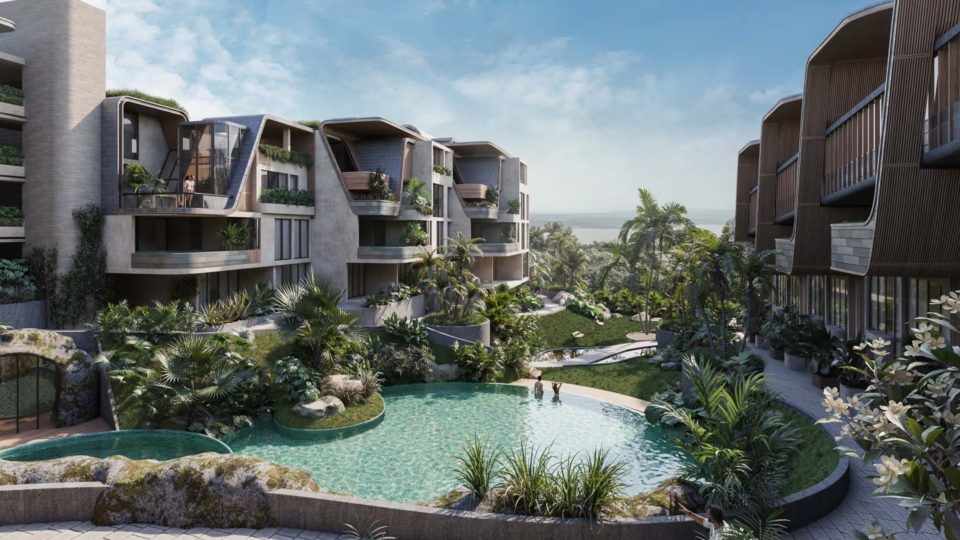Goa Bazar
Goa Bazar
Panjim’s forthcoming Craft Bazaar is conceived as a living showcase for Goan artisanship, blending the atmosphere of Old Goa’s vernacular lanes, Fontainhas’ pastel streets and the state’s iconic flea markets. More than 150 vendor pods will rotate every fortnight, while a dedicated food street hosts 20 cafés and kitchens, ensuring constant novelty and a broad culinary pull. The entire market—over 250 up-cycled shipping containers—forms small, themed clusters so visitors can engage directly with craft-persons in an intimate, one-to-one setting rather than in crowded aisles.
Every container is fabricated off-site in a nearby factory, complete with modular windows, railings, climate-responsive shutters that unfold into deep monsoon canopies, and plug-and-play services. Once numbered and finished, the boxes are craned onto light foundations and stitched together with pre-engineered steel members, trimming on-site work by more than 80 percent and dramatically cutting carbon emissions and construction waste. The only in-situ element is the ground-level landscape: an elongated rain-harvesting pond encircled by a timber boardwalk punctuated with stepped ghats, inviting slow strolls and lakeside conversations emblematic of Goa’s laid-back culture.
Spatially, the clusters weave along a meandering pedestrian spine that echoes the organic geometry of traditional Goan streets. Pocket courts, shaded bridges, rooftop terraces and occasional viewing decks break any sense of repetition, while native palms, bauhinias and flowering shrubs seed an evolving biodiversity corridor radiating from the central pond. The kit-of-parts logic allows each container typology—retail stall, café kitchen, kiosk corridor or restroom—to be re-skinned or re-arranged as demand shifts, ensuring long-term adaptability without demolition. Together these strategies create an open-air marketplace that is light on resources yet rich in experience: a prefabricated village where sustainability, cultural memory and artisan commerce coalesce into a contemporary “walk in the park” for locals and travellers alike.
Panjim’s forthcoming Craft Bazaar is conceived as a living showcase for Goan artisanship, blending the atmosphere of Old Goa’s vernacular lanes, Fontainhas’ pastel streets and the state’s iconic flea markets. More than 150 vendor pods will rotate every fortnight, while a dedicated food street hosts 20 cafés and kitchens, ensuring constant novelty and a broad culinary pull. The entire market—over 250 up-cycled shipping containers—forms small, themed clusters so visitors can engage directly with craft-persons in an intimate, one-to-one setting rather than in crowded aisles.
Every container is fabricated off-site in a nearby factory, complete with modular windows, railings, climate-responsive shutters that unfold into deep monsoon canopies, and plug-and-play services. Once numbered and finished, the boxes are craned onto light foundations and stitched together with pre-engineered steel members, trimming on-site work by more than 80 percent and dramatically cutting carbon emissions and construction waste. The only in-situ element is the ground-level landscape: an elongated rain-harvesting pond encircled by a timber boardwalk punctuated with stepped ghats, inviting slow strolls and lakeside conversations emblematic of Goa’s laid-back culture.
Spatially, the clusters weave along a meandering pedestrian spine that echoes the organic geometry of traditional Goan streets. Pocket courts, shaded bridges, rooftop terraces and occasional viewing decks break any sense of repetition, while native palms, bauhinias and flowering shrubs seed an evolving biodiversity corridor radiating from the central pond. The kit-of-parts logic allows each container typology—retail stall, café kitchen, kiosk corridor or restroom—to be re-skinned or re-arranged as demand shifts, ensuring long-term adaptability without demolition. Together these strategies create an open-air marketplace that is light on resources yet rich in experience: a prefabricated village where sustainability, cultural memory and artisan commerce coalesce into a contemporary “walk in the park” for locals and travellers alike.
